
by Elizabeth Atalay | Aug 2, 2016 | 2016, Breastfeeding, Breastfeeding, Newborn Health, Nutrition, Pregnancy, World Moms Network, World Voice
As parents we can not protect our children from the whole world around us, though we often wish we could. There are some things that we can do to produce the best possible outcome for our children. The first week of August has been designated as World Breastfeeding Week, finally breasts are getting the global attention they deserve for all the right reasons. Breastfeeding is being recognized as an important building block to the global Sustainable Development Goals. Having spent nearly a decade either pregnant or breastfeeding my own four kids, I feel like an unofficial ambassador.
My personal commitment to nursing our babies all began with a trip to Turkey. Our first baby was going to be six months old when we would be traveling and with all of the accessories needed for travel with an infant I was feeling overwhelmed. I realized the easiest way to streamline feeding would be to continue to exclusively breastfeed until we returned home. In that way we were able to skip bottles that needed to be sanitized, glass jars of babyfood, and the quest for clean water on the go. The experience taught me how portable babies can be, and the ease that breastfeeding provided in being able to feed them whenever and wherever I needed. Recent research, which inspired the declaration of World Breastfeeding Week, has highlighted the benefits of breastfeeding beyond the convenience. Exclusive breastfeeding in the first six months of life has been shown to reduce the occurrence of ear infections, diarrhea, and respiratory problems in infants, and may even help to prevent obesity in later years. In 2011 the Surgeon General created a call to action to support breastfeeding resulting in the month of August being declared National Breastfeeding Awareness Month.
The First Thousand Days: A Crucial Time For Mothers and Children- and the World by Roger Thurow focuses on the importance of proper nutrition during the time period when a baby’s brain develops most rapidly, the 1,000 days from conception to the age of two years old. This is when the first breastmilk is so important because it contains colostrum which is rich in antibodies that boosts the newborn immune system. Breastmilk has been shown to contain all of the essential nutrients necessary to support a baby’s rapid development and in the book the American Academy of Pediatrics is quoted in 2012 as proclaiming:
“given the documented short and longterm medical and neuro-developmental advantages of breastfeeding, infant nutrition should be considered a public health issue not only a lifestyle choice.”
-AAP
Breastfeeding on our travels kept our baby healthy throughout, but as we know we only have so much control. The 7.6 earthquake that hit on our second night in Turkey was a stark reminder of such. The next morning I thought of all the mothers who had crouched on their beds shielding their babies as I had while the earth shook, feeling the same fear, but who had not been as fortunate to survive. We can not always protect our children from everything, but by raising awareness with World Breastfeeding Week mothers will know that by initiating breastfeeding within the first couple of hours after birth a newborn baby is given the best possible start in life.
This is an original post written for World Moms Network by Elizabeth Atalay.
Did you find that you had support to breastfeed your baby?

Elizabeth Atalay is a Digital Media Producer, Managing Editor at World Moms Network, and a Social Media Manager. She was a 2015 United Nations Foundation Social Good Fellow, and traveled to Ethiopia as an International Reporting Project New Media Fellow to report on newborn health in 2014. On her personal blog, Documama.org, she uses digital media as a new medium for her background as a documentarian. After having worked on Feature Films and Television series for FOX, NBC, MGM, Columbia Pictures, Warner Brothers, 20th Century Fox, and Castle Rock Pictures, she studied documentary filmmaking and anthropology earning a Masters degree in Media Studies from The New School in New York. Since becoming a Digital Media Producer she has worked on social media campaigns for non-profits such as Save The Children, WaterAid, ONE.org, UNICEF, United Nations Foundation, Edesia, World Pulse, American Heart Association, and The Gates Foundation. Her writing has also been featured on ONE.org, Johnson & Johnson’s BabyCenter.com, EnoughProject.org, GaviAlliance.org, and Worldmomsnetwork.com. Elizabeth has traveled to 70 countries around the world, most recently to Haiti with Artisan Business Network to visit artisans in partnership with Macy’s Heart of Haiti line, which provides sustainable income to Haitian artisans. Elizabeth lives in New England with her husband and four children.
More Posts

by World Moms Blog | Aug 1, 2016 | 2016, Heartfulness, Meditation, Social Good, World Moms Blog, World Moms Network, World Voice
This summer, our #WorldMom Hannah Ashton reports about the Heartfulness Conference which was held at NJPAC, New Jersey.
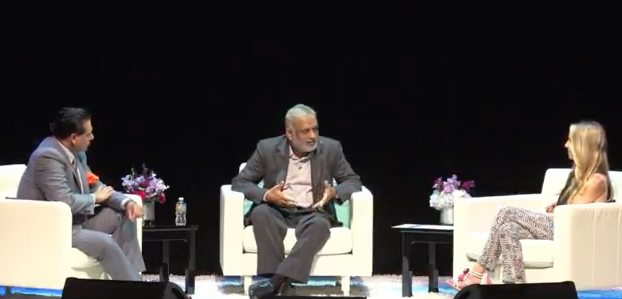
The best way to teach children to meditate is to be an example. – Kamlesh D. Patel
I recently started Heartfulness meditation. When a group of World Moms started to meditate together, I decided to join in. I had never meditated before but life was stressful with two young children and a house move and I was looking to add a little more balance to my life. I wanted to be a more chilled-out parent and be calmer in stressful, time sensitive situations such as getting both children to school on time.
The first time I participated in Heartfulness meditation, I was surprised at how quickly I was able to go into meditation. Firstly, the world moms chatted about our days through a video conference tool which in itself was relaxing. Then our Heartfulness trainer (another world mom) talked us through a relaxation exercise which I found extremely helpful in moving me to a meditative state and we meditated together for fifteen minutes, being instructed to focus on the light in our heart and gently guide our attention back to our heart when we felt our minds begin to wander.
The second and third times we meditated together, the fifteen minutes felt like five. I find it easier to meditate with others, rather than alone, mainly because I like to be led in the relaxation exercise and I appreciate the comfort of others around me. I really enjoy getting to know other mothers around the world.
This past weekend I attended The Heartfulness Institute’s seminar in New Jersey, USA. Dr. Partha Nandi, M.D. did a wonderful job as the Master of ceremonies. In his opening he praised the benefits of meditation and reminded us to be our own health heroes; to eat less and to move with purpose. Looking after our bodies and our health is vital.
I was excited to see Gabrielle Bernstein speak, having watched her on Oprah. Gabby is a New York Times bestselling author and speaker. She explained that meditation had been a radical turning point in her life. As a child she had watched her yogi mother practice daily meditation. Frazzled by the challenges of daily life, Gabby’s mother would go into her bedroom, close the door and meditate. She would reappear noticeably calmer and revived.
When Gabby had existential crises as a teenager and in her early twenties, her mother advised that there was only one way – to turn inward.
Gabby has been meditating daily for eleven years.
Kamlesh D. Patel is the spiritual guide of the Sahaj Marg system of raja yoga meditation and president of Shri Ram Chandra Mission.
Kamlesh describes the process of meditation as ‘cool rain in hot summer which quenches your thirst’.
He said that the deeper into yourself you go, the less selfish you become. He praised technology which allows remote meditation sessions and provides much easier access to Heartfulness meditation sessions for those that want them. I’d like to point out that these sessions are completely free.
Kamlesh said that it was very important to teach children to chill and how to cope. However, he would not recommend teaching meditation to children under 16; the best way to teach children is to be an example. Gabby concurred; her mother’s example had led her to turn to meditation as she got older in challenging times. During this talk of children Dr. Partha said how helpful meditation is to his role as a parent. He said that when one of his children is crying incessantly, his training brings him back to how he should conduct himself.
Focusing back on my own personal meditation experience, I have to agree.
When I take the time to meditate, activities such as the school run do seem to run more smoothly. I have more patience; I am kinder and calmer.
From my experience, I would recommend giving Heartfulness meditation a chance.
MEDITATE WITH A TRAINER – Heartspots.heartfulness.org
This is an original post for World Moms Network written by Hannah Ashton.
World Moms Blog is an award winning website which writes from over 30 countries on the topics of motherhood, culture, human rights and social good. Over 70 international contributors share their stories from around the globe, bonded by the common thread of motherhood and wanting a better world for their children.
World Moms Blog was listed by Forbes Woman as one of the "Best 100 Websites for Women 2012 & 2013" and also called a "must read" by the NY Times Motherlode in 2013. Our Senior Editor in India, Purnima Ramakrishnan, was awarded the BlogHer International Activist Award in 2013.
More Posts

by Jennifer Burden | Jul 29, 2016 | 2016, Human Rights, North America, Peace, Relationships, Religion, USA, World Voice
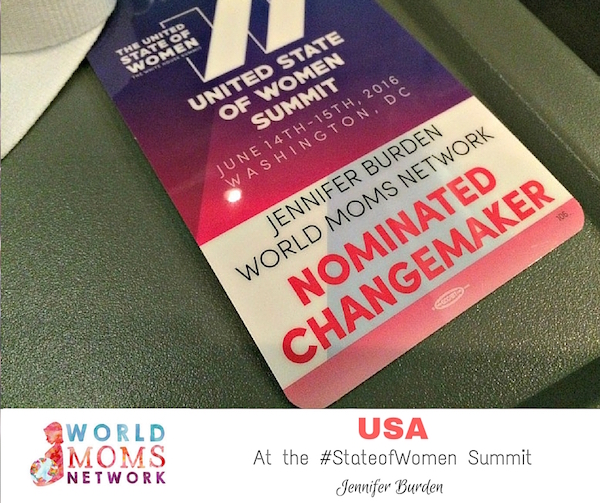
Attendees were asked to arrive prior to the doors opening at 6:30am on Tuesday morning. I arrived at 6:20am, and the colorful line of women’s clothing wrapped for an entire block around the entrance of the Walter E. Washington Convention Center in Washington, DC. While on line, I met Kinda, a woman originally from Syria and who had been living in the U.S. since 2010.
While wearing a golden colored hijab, Kinda explained that she worked as the regional director for the Women’s Initiative for Self-Empowerment (WISE), an organization which seeks to inspire a network of young Muslim female leaders to become ambassadors for women in their community in Dallas, Texas. We spoke excitedly about our roles to advance women, which made our wait to get inside the building fly by.
We parted in the crowd once we got to registration, where we were separated by last name. I made my way through the convention center, grabbed breakfast, and even bumped into a fellow World Mom, Lashaun Martin from the Mocha Moms!
To get a good spot, I headed to the main room and met another woman who was studying to be a human rights lawyer. We joined the women from the Rape Crisis Center of DC at their table. When they told me about the work they did, all I could get out was a big “THANK YOU!” Here is a photo of us:
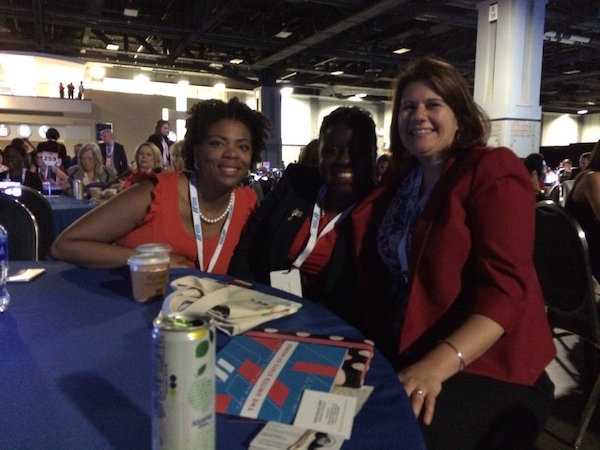
With awesome women from the DC Rape Crisis Center in Washington, DC for the State of the World Women’s Summit on June 14, 2016.
As the crowd was settling down, I saw Kinda, my friend from about all of 30 minutes ago, set her stuff down at a table nearby, and I went over to invite her over to sit with us, and she did.
From June 14th -15th this year women change makers from around the country were all led together by invitation from the White House to attend the first ever United State of Women Summit. Speakers included United States President Barack Obama, First Lady Michelle Obama, Vice President Joe Biden, Save the Children CEO and President Carolyn Miles, US Attorney General Loretta Lynch, Oprah and more.
The Violence Against Women Act (check out my post about VAWA on a fellow World Mom, Another Jennifer’s Blog), equal pay, paid maternity and sick leave, raising the minimum wage, women empowerment, women entrepreneurship. women in politics, LGBT rights, terrorism, poverty, and keeping more girls in school worldwide were main topics of the event.
Introduced by Mikaila, the child entrepreneur behind the now popular Me and the Bees Lemonade, our country’s Commander in Chief took the stage. His first words?
“This is what a feminist looks like!” — US President Barack Obama
He was the only one on stage, and the crowd of over 5,000 women applauded with intensity and whoops of joy.
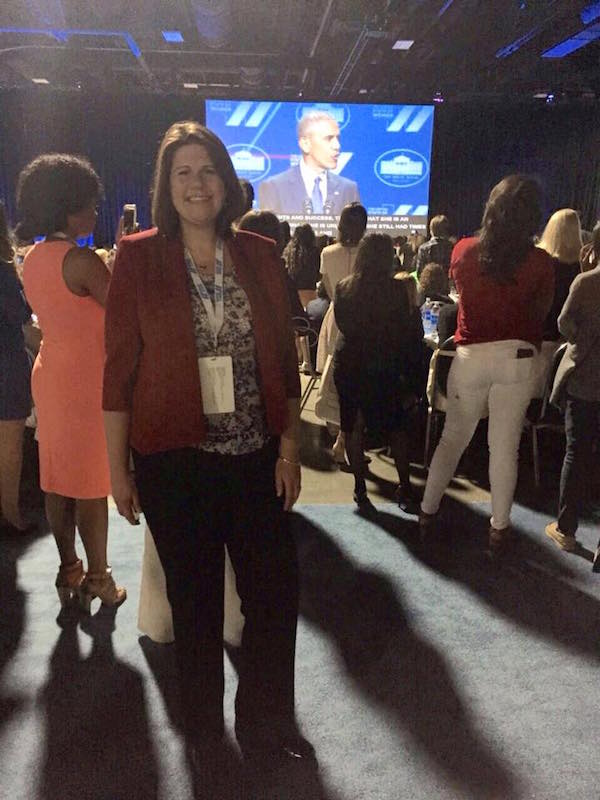
Jennifer Burden proud to be listening to US President Barack Obama speak live at the State of the World’s Women Summit on June 14, 2016 in Washington, DC.
President Obama gave a speech of unity and inclusion. His message was about a country for everyone, regardless of race, belief, sex, or sexual orientation. He mentioned how his daughters and their millennial counterparts saw the world very differently from how the world is today. His girls think it’s strange to treat people poorly just because they are different. How their generaton thinks it’s weird that there hasn’t been a woman President yet. Or that it’s surprising that women make less pay than men.
He also said that we’re on track for women to achieve equal pay by 2080. 2080??? And that the nation needed to work together to close the gap now.
After his speech I felt like our voices of women across the nation were being valued. I needed to hear that someone cared about equality so passionately. I needed to hear that everyone was accepted.
With news of a systematic race problem being unveiled through the powers of social media in the United States, gun violence, poverty and world terrorism, I knew what the President spoke of wasn’t the full reality today in our country, but what we aimed to be. Dreams of unity and equality that we can make it happen. We WILL get there, but everyone needs to play a role on the team. It gave me hope, and I was quite emotionally moved by hearing his words. They motivated me to try harder.
When I turned around to face the table after he spoke, Kinda could see my teary face. She started walking around the circular table towards me, and I met her half way. We hugged. We were pure strangers just a few hours ago. We hugged the hug that we needed to hug after that speech. A hug that we all belonged. A hug that we were all understood. A hug that it is not only ok, but also safe, to be different from one another. A hug that supporting each other should be our normal first intention and reaction above all else.
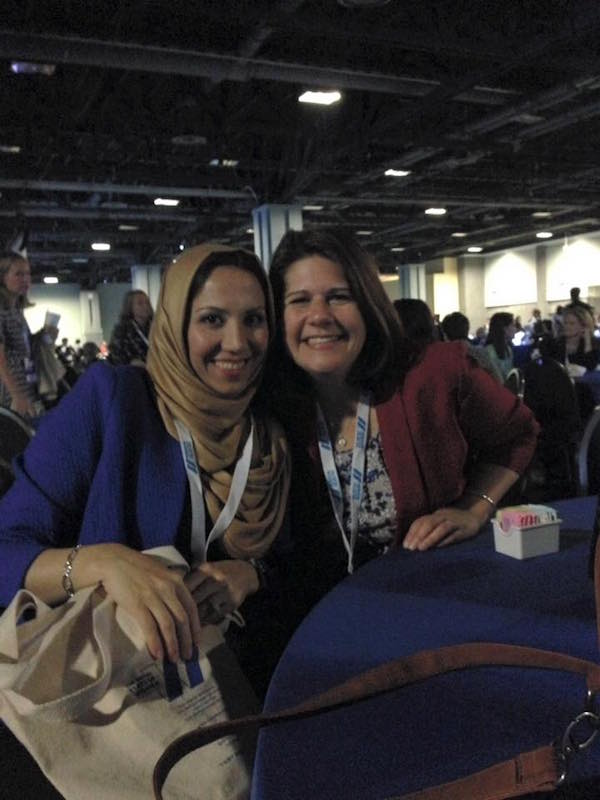
Kinda and Jennifer Burden pose for a photo at the State of the World’s Women Summit in Washington, DC on June 14th, 2016.
This is my America. And I am proud to be a part of it, just one citizen among the many helping to lead it forward in progress. We can all do our part in appreciating our differences and finding ways in which we can work together. For staying positive. For seeing the good in the world, instead of being afraid of what makes us different. For finding what brings us together as humans.
This is where I see my country’s future. This is how I see the world’s future. This is what I want for the world’s children. Freedom. Peace. The ideas are out there, so no doubt it can be achieved. It is possible!
As a part of World Moms Network, we seek to bond together and do our part to help create a world of friendship, peace, acceptance, and understanding. It’s even in our vision statement,
“We envision a world of peace and equality, grounded by our common bond of motherhood.”
We believe it can happen. We’re aiming for it. Join us. Hang out, here, on our website. Sign up for our newsletter. Follow us on social media. Share and like our posts. Comment and share your thoughts on how we can make the world a more peaceful place. Tell us what you’re doing to help achieve these goals from your corner of the world, whether it be a random act of kindness or a major campaign — no step is too small! And we are so interested to know about YOU! This space is for all of us. This project is real. Be a part of our movement — you’re invited, and we’re still just getting started!
This is an original post to World Moms Network by Founder and CEO, Jennifer Burden, in New Jersey, USA.
Photo credits to the author.
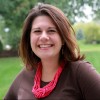
Jennifer Burden is the Founder and CEO of World Moms Network, an award winning website on global motherhood, culture, human rights and social good. World Moms Network writes from over 30 countries, has over 70 contributors and was listed by Forbes as one of the “Best 100 Websites for Women”, named a “must read” by The New York Times, and was recommended by The Times of India.
She was also invited to Uganda to view UNICEF’s family health programs with Shot@Life and was previously named a “Global Influencer Fellow” and “Social Media Fellow” by the UN Foundation. Jennifer was invited to the White House twice, including as a nominated "Changemaker" for the State of the World Women Summit. She also participated in the One Campaign’s first AYA Summit on the topic of women and girl empowerment and organized and spoke on an international panel at the World Bank in Washington, DC on the importance of a universal education for all girls. Her writing has been featured by Baby Center, Huffington Post, ONE.org, the UN Foundation’s Shot@Life, and The Gates Foundation’s “Impatient Optimists.” She is currently a candidate in Columbia University's School of International and Public Affairs in the Executive Masters of Public Affairs program, where she hopes to further her study of global policies affecting women and girls.
Jennifer can be found on Twitter @JenniferBurden.
More Posts - Website
Follow Me:


by Ms. V. (South Korea) | Jul 26, 2016 | 2016, Equality, Human Rights, Prejudice, Social Equality, World Voice
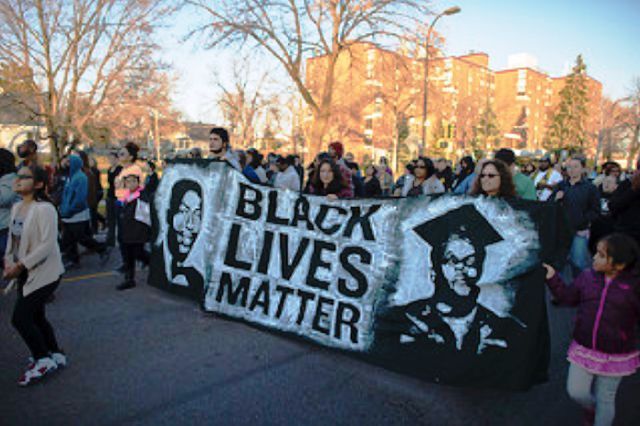
The beginning, middle, and end of all conversations about race in my family of origin were that racism was bad and skin color didn’t matter. There’s a story my mother loved to tell: She was reading a children’s book to one of my brothers that asked the question, “Do you know anybody who has a skin color that is different from your own?” and my brother confidently replied that he did not, much to the amazement of my mother. One of her closest friends, a woman my brother saw nearly every day, was black. When my mother pointed this out he said she was silly, but the next day when mom’s friend came over, my brother grabbed her arm, stared at it, and then announced very seriously, “You’re black!”. This story was always told as a punctuation to an argument or conversation about how we’re all born colorblind.
Until I was in my 20s, I believed that this story proved, not only that we’re born colorblind, but that my family and I were not racist. After all, we didn’t even see color! And my mom’s best friend was black! Of course, now I know that a young white male child not seeing color only proves the existence of white privilege. If he’d been walking around this world in black skin, he wouldn’t have the luxury of not noticing skin color as his skin color would have had a profound effect on his experience of the world. (Also, the idea that children do not see color has been completely debunked.)
We do a great disservice to our children when we explain away racism as something that is simply “bad”. If racism is bad, then people who are racists are bad people, so if you’re a good person, then you can’t be racist. We cannot frame racism as an individual choice rather than a systemic reality. Racism – specifically white supremacy – is the water in which we all swim.
In the wake of yet another police shooting of an unarmed black man here in the United States, I find myself discussing race a lot with my two children.
They are 5 and 2, and the challenge of having these uncomfortable and complex conversations-and answering the myriad of questions that come from them- make me understand why so many white parents stick to explanations that sound an awful lot like the ones I got.
As white folks, we like for things to be tidy. We like for things to be easy. We have benefitted a long time from binary thought. Wading into the discomfort of naming and facing systemic racist oppression feels hard. There is a term for that: “White Fragility”.
I’ve seen a lot of white parents posting on social media, asking how to discuss racism with their children. I’m not an expert, but I can share what I tell my children.
- We are white, which means we have benefited from many unearned and undeserved advantages.
- Our experience of the world is greatly influenced by the fact that all of our systems are set up to uphold white supremacy. Our worldview is shaped by our experience of being white. We do not and cannot know what it is to be a person of color.
- Since we do not and cannot know the experience of being a person of color, we must listen, pay attention, and believe. We cannot make excuses or sweep things under the rug of good intentions.
- We are witnessing with our own eyes and, thanks to the internet and social media, hearing more and more stories that confirm what people of color have been expressing about their experience of the world.
- Black lives are in danger (as they have always been). Nobody is questioning or wondering if white lives matter. There does, however, seem to be some disagreement about whether or not black lives matter. So, we need to say, loud and clear, that yes, #blacklivesmatter.
- When #blacklivesmatter, (and brown lives, and queer lives, and the lives of all folks who are on the margins due to systemic oppression) then, and only then, will all lives matter.
- It is the job of white folks, not people of color, to end white supremacy. It is the job of white folks to educate themselves, and not the job of people of color to educate us.
- We are all complicit in racism, systemic oppression, and white supremacy. No amount of good intentions or meaning well will change that. There are a lot of good people who do not realize, or do not want to believe that they are racist. But does a fish know it’s in water? Or is water all it knows, so it can’t even comprehend or imagine any other reality? Racism is the water in which we all swim. We have to choose to see the water. #blacklives depend on it.
This is an original post by Ms. V., in the USA.
Picture Credit: Fibonacci Blue
Ms. V returned from a 3-year stint in Seoul, South Korea and is now living in the US in the beautiful Pacific Northwest with her partner, their two kids, three ferocious felines, and a dog named Avon Barksdale. She grew up all over the US, mostly along the east coast, but lived in New York City longer than anywhere else, so considers NYC “home.” Her love of travel has taken her all over the world and to all but four of the 50 states.
Ms. V is contemplative and sacred activist, exploring the intersection of yoga, new monasticism, feminism and social change. She is the co-director and co-founder of Samdhana-Karana Yoga: A Healing Arts Center, a non-profit yoga studio and the spiritual director for Hab Community. While not marveling at her beautiful children, she enjoys reading, cooking, and has dreams of one day sleeping again.
More Posts
Follow Me:


by Tes Silverman | Jul 19, 2016 | 2016, Poverty, Tes Silverman, World Moms Network, World Voice
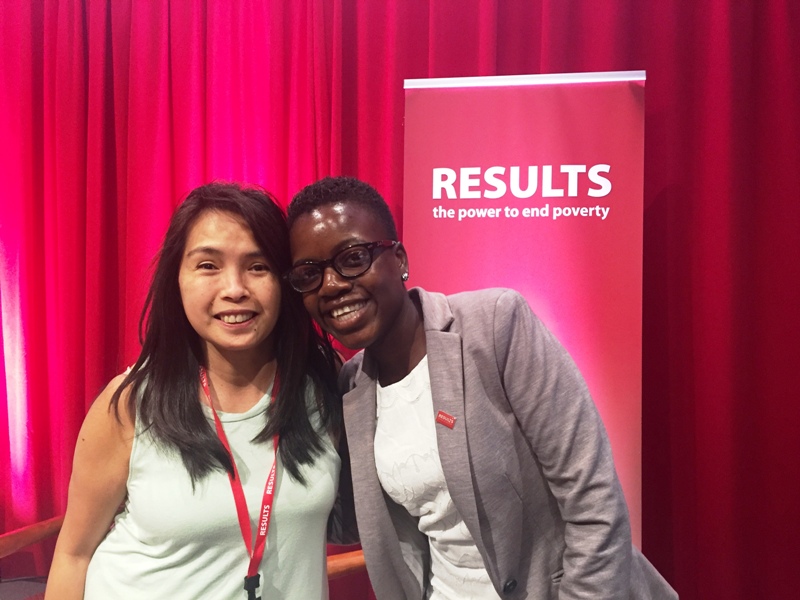
#WorldMom Tes Solomon Silverman with Loyce Maturu (Advocacy Officer, Africaid Zvandiri) from Zimbabwe
Two weeks ago, I was chosen to represent World Moms Network at the RESULTS International Conference’s Social Media Corps. World Moms Elizabeth Atalay and Cynthia Changyit Levin were also there to guide me through this conference. RESULTS International Conference is held at Washington DC every year, bringing together experts to speak about ways to eradicate poverty in the US and other parts of the world.
I have always thought of myself as being aware of what’s happening in the world, but I was wrong. During the four day conference I was blown away by the speakers and their stories and how naive I have been with regards to poverty.
I listened to speakers like Tianna Gaines-Turner (RESULTS Advocate & Expert on Poverty) & Angela Sutton (RESULTS Advocate & Expert on Poverty) who spoke about their struggle to feed their families with the help of SNAP (Supplemental Nutrition Assistance Program). I heard about how crucial it is to keep this program going.
In Sutton’s words, “it affects anyone and everyone, so we must bridge the gap to understand that poverty doesn’t discriminate”.
In addition to addressing poverty, issues that affect women and children both in the US and in other countries were discussed. Of the speakers that I heard, the one that made an impact on me was Loyce Maturu (Advocacy Officer, Africaid Zvandiri) from Zimbabwe. Maturu lost her mother and brother to AIDS in 2000. As devastated as she was about their deaths, she was unprepared for how her life would further change when she was diagnosed in 2004 at the age of 12 with HIV and tuberculosis. Living in a country where fear of the unknown and the stigma surrounding HIV and tuberculosis made it difficult for Maturu to remain where she lived so she was sent to live with her aunt and uncle.
For most people, being sent to live with family could be seen as a blessing, but for Maturu, it was a nightmare that added to her feeling of isolation. She was physically and emotionally abused by her relatives, and even had thoughts of taking her own life in 2010 because she felt alone.
Her life changed when she able to receive treatment as a result of programs funded by the Global Fund. Founded in 2002, the Global Fund is a financing institution designed to establish partnerships between governments, communities and the private sector, with the goal of ending AIDS, tuberculosis and malaria as epidemics. Since its inception, programs supported by the Global Fund have saved 17 million lives and are on target to reach 22 million lives by the end of 2016.
While treatment for Maturu was available, access to medication was difficult because of drug shortages. In addition, one had to travel long distances to get access to medication and families couldn’t afford to pay the transport necessary to get to a facility.
For Maturu, now 24, the Global Fund has made it possible for her to get the treatment she needs to be able to tell her story. Since 2009, she has been a volunteer peer counsellor, going to schools and sharing her story by about living with HIV, especially to adolescents and young people who are affected by the stigma associated around AIDS. She believes it is important to educate people that adolescent and young people can lead healthy lives even if affected by HIV and tuberculosis.
Maturu believes that continued financial support of the Global Fund is crucial in fighting diseases of poverty. This September, funding for it is up for replenishment. Every three years, the Global Fund holds a pledging meeting where donors make specific financial commitments to support the fight against HIV/AIDS, TB and malaria. This year, the United States is being asked to continue its pledge of ⅓ of the Global Fund’s requested $13 billion, as it has three years ago.
According to Maturu, “the Global Fund transforms lives and gives us hope to continue to fight and end these epidemics”.
As someone who has never been afflicted by HIV or tuberculosis, I can’t imagine the heartache and desperation Maturu felt after being diagnosed. Her determination and courage to fight every obstacle she came across with, to receive treatment and live through them is inspiring. As a parent, all I want is for my family to stay healthy and be able to provide a future for my child, but I also know that a health crisis or job loss can alter it in an instant.
As a journalist whose job is to inform others about what I learned from the RESULTS conference, I do so by relaying the stories of Tianna Gaines-Turner, Angela Sutton and Loyce Maturu. By telling their stories, I hope to bring awareness to issues of poverty here and other parts of the world. No one is immune to sickness or crises, but with education and awareness, a lot can be done to fight these issues.
In Maturu’s words, “If I’m going to live in this world, I want to share my story and let people know that they can have healthy, happy lives”.
At the end of the day, don’t we all want the same thing?
To find out about more about RESULTS, click below:
http://results.org/
[ABTM id=123]

Tes Silverman was born in Manila, Philippines and has been a New Yorker for over 30 years. Moving from the Philippines to New York opened the doors to the possibility of a life of writing and travel. Before starting a family, she traveled to Iceland, Portugal, Belgium, and France, all the while writing about the people she met through her adventures. After starting a family, she became a freelance writer for publications such as Newsday’s Parents & Children and various local newspapers. Fifteen years ago, she created her blog, The Pinay Perspective. PinayPerspective.com is designed to provide women of all ages and nationalities the space to discuss the similarities and differences on how we view life and the world around us. As a result of her blog, she has written for BlogHer.com and has been invited to attend and blog about the Social Good Summit and Mom+Social Good. In addition, she is a World Voice Editor for World Moms Network and was Managing Editor for a local grass roots activism group, ATLI(Action Together Long Island). Currently residing in Virginia Beach, VA with her husband, fourteen year-old Morkie and a three year old Lab Mix, she continues to write stories of women and children who make an impact in their communities and provide them a place to vocalize their passions.
More Posts - Website
Follow Me:





by Cindy Levin | Jul 12, 2016 | 2016, Independence, Politics, Poverty, Social Good, Uncategorized, USA, World Voice
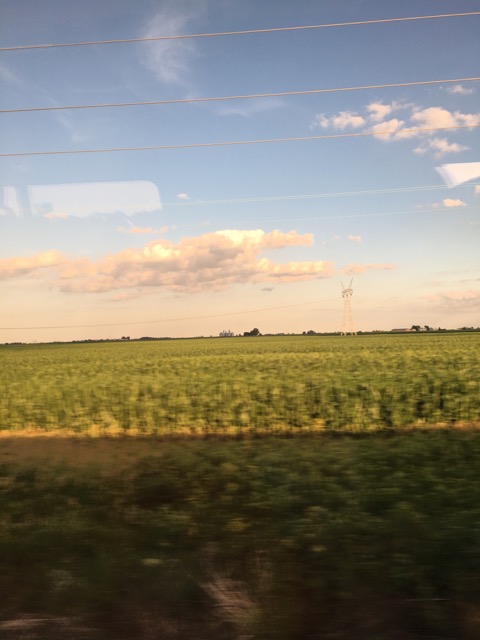
Rushing past rural cornfields in Missouri by train
I spent a quiet Fourth of July watching the heartland of America roll by my train window on a journey from Chicago to St. Louis. Playing in my headphones was the soundtrack of an old educational cartoon called “Schoolhouse Rocks!” In honor of my country’s Independence Day, I was listening to musical explanations of the American Constitution, the concept of “manifest destiny” (the 19th-century idea that expansion of the U.S. from the Atlantic Ocean to the Pacific was justified and inevitable), and the American Revolution. The simplistic way the songs presented information to me as a child in the 1970’s led me to believe that everything my government did was right and good. I completely trusted American authority despite glaring evidence that manifest destiny didn’t work well at all for the Native Americans who already lived in the center of the continent.
Now, in my 40’s, I know better. I see that the America that I live in, is not a nationally shared experience. For instance, the little rural towns I saw from the train are not my day-to-day reality although almost 1/5 of all U.S. residents live in communities like them. Here’s another difference: twenty-three million Americans live in food deserts – urban and rural – with little to no access to fresh fruits and vegetables while others are surrounded by high end grocery stores. Other differences are not bound by location. From sea to shining sea, challenging voices ring out to proclaim “Black Lives Matter” to help everyone understand that shootings of citizens by police officers is a reality for people of some skin tones and not for others. Each person lives a different truth depending on one’s geography, race, income, and a host of other factors. Clearly, for all its wealth and power, the United States is letting many of our people down.
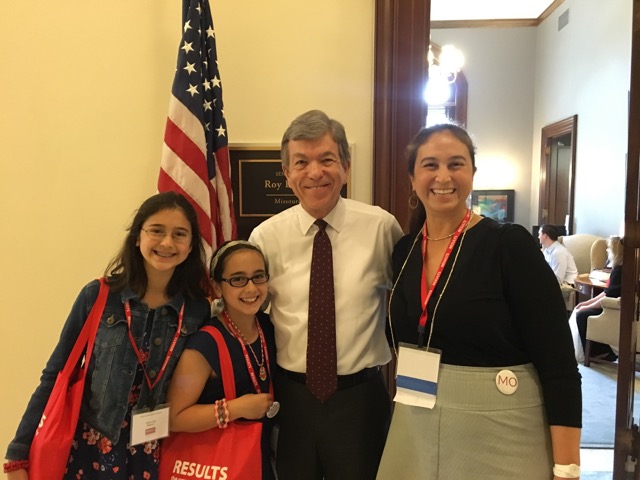
#WorldMom Cindy and her daughters with U.S. Senator Roy Blunt in Washington D.C.
Such everyday injustices are what led me to Washington D.C the week before Independence Day to join hundred of anti-poverty advocates at the RESULTS International Conference and Lobby Day with my daughters. We visited the offices of our elected officials and urged them to change systems that keep so many people in poverty across the U.S. and around the world.
Every year we go, we wade into a hostile partisan landscape. We have to move past the open negativity our leaders show on T.V. in order to connect with the individual humans they are and paint a picture of what life is like for Americans they might never meet. If left to their own devices, party extremists drift further apart. Like a mother bringing arguing siblings back together, it’s our responsibility as citizens to reach out and remind them how they are connected to all of us. In this way, we guide our country toward fairer tax policies, better nutrition, and improved maternal/child health…all with a goal of providing each person with opportunity to reach their full potential in life.
Back on the train, hearing the words of our constitution sung in folk-style harmonies reminded me how every person in our political extremes truly believes she or he is honoring the American founding fathers’ vision. No matter how far apart we are on policy ideas, every one of us wants our country to thrive. We want to be treated with respect and raise our children in safe communities with good schools. We truly have more shared values than we often think we do.
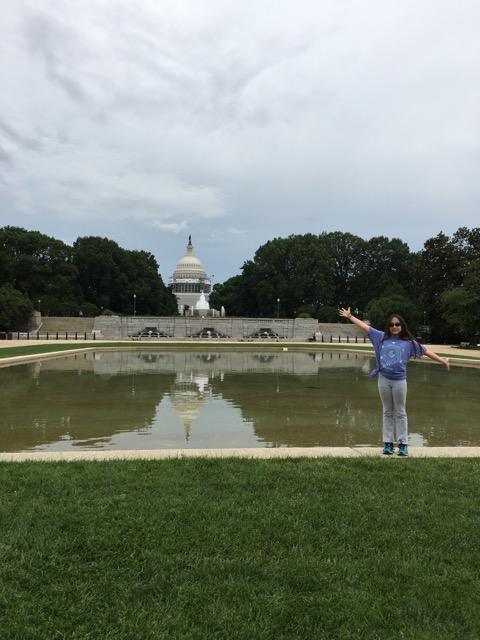
Cindy’s daughter in front of the United States Capitol building
Here is my vision of my country and for my country:
My America is a place where diversity is strength, not something to be feared. It’s where voices can be heard when we find the courage to speak out. It’s a place where my children can live, grow, and thrive. It’s not colorblind. It’s not perfect. It’s not best in the world about everything, but we are a country of possibilities and leadership. My America is a place where we can speak truth to power and come closer to becoming a more perfect union.
How would you finish the phrase “My country is…” for the place you currently call home? What parts of your answer are different for your fellow citizens? How can you be engaged in helping your country be the best it can be for all people?
Cynthia Changyit Levin is a mother, advocate, speaker, and author of the upcoming book “From Changing Diapers to Changing the World: Why Moms Make Great Advocates and How to Get Started.” A rare breed of non-partisan activist who works across a variety of issues, she coaches volunteers of all ages to build productive relationships with members of Congress. She advocated side-by-side with her two children from their toddler to teen years and crafted a new approach to advocacy based upon her strengths as a mother. Cynthia’s writing and work have appeared in The New York Times, The Financial Times, the Washington Post, and many other national and regional publications. She received the 2021 Cameron Duncan Media Award from RESULTS Educational Fund for her citizen journalism on poverty issues. When she’s not changing the world, Cynthia is usually curled up reading sci-fi/fantasy novels or comic books in which someone else is saving the world.
More Posts - Website
Follow Me:

























